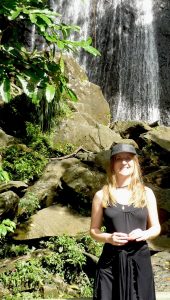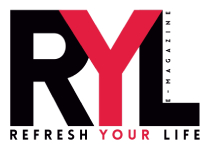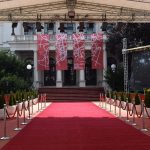 WORDS: BRANA MIJATOVIC, PH.D. IS AN ENERGY HEALER WHO COMBINES SCHOLARLY RESEARCH WITH PRACTICAL APPLICATIONS TO HELP HER CLIENTS OVERCOME OBSTACLES AND ACHIEVE A GREATER SENSE OF WELLBEING AND HAPPINESS
WORDS: BRANA MIJATOVIC, PH.D. IS AN ENERGY HEALER WHO COMBINES SCHOLARLY RESEARCH WITH PRACTICAL APPLICATIONS TO HELP HER CLIENTS OVERCOME OBSTACLES AND ACHIEVE A GREATER SENSE OF WELLBEING AND HAPPINESS
FOTO: ANIMA MUNDI
What is energy healing? There is a very simple answer to this question — energy healing brings into balance our body, mind and soul. Traditional cultures and societies from around the world have been using many forms of energy healing for centuries, many of which are now becoming acknowledged by the scientific community. In his book Energy Medicine: The Scientific Basis, James Oschman, Ph.D. states “More evidence and confirmation is coming from the scientific world on the validity of the ancient healing practices that approached healing from addressing the spiritual, mental, emotional, and physical aspects of our being” (2015). Medical doctors of world renown are opening up to the possibility that some of these practices are helping their patients and have themselves begun researching and integrating them into their work.
Energy healing can be practiced by ourselves or by a trained professional and can engage one or more of our senses. It can work with the conscious and the subconscious mind and focus on sound, color, touch, movement, breathing, laughter, visualization, electro-magnetic waves, scalar waves, and more.
While I currently work with several distinct healing modalities unrelated to music, as a musician and a musicologist I was always interested in discovering how is it that music can help people relax, change their mood, influence their thinking. I was also always drawn to the music traditions of far-away cultures. So I created a course Music and Healing in World Traditions, that I taught at the William and Mary College in 2015. In the process of creating this course it became apparent that even with the whole semester at our disposal we would just be scratching the surface in terms of learning what music actually does for us.
While many ancient texts have discussed music’s ability to heal body, mind, and soul and while many traditional cultures used music in this way, Western civilization has been largely dismissing this as simply a metaphorical expression. Only recently has Western science been able to measure and verify the importance of music in enhancing our biological, psychological, emotional, social, and spiritual wellbeing. In this course we looked at music used in healing practices from around the world from perspectives of neuroscience, linguistics, physics, philosophy, psychology, ethnomusicology, music therapy and other disciplines, in order to understand how each component of what is understood as music has a crucial role in supporting and maintaining health of human beings throughout the world.
Our virtual travelling around the world led us to almost every continent where traditional cultures used music for healing purposes. We also looked at traditional music used in unusual settings, such as Indonesian Gamelan music used in prisons in the U.K. to improve socialization of convicted criminals and how a renowned New York oncologist used Tibetan bowls with his cancer patients. We have seen how singing, dancing, playing a musical instrument and listening to certain kinds of music can support cognitive processes and spiritual growth, how it influences biological rhythms, helps with pain-management, and increases emotional stability. Additionally, recent discoveries in neuroscience have shown that specific music genres were particularly helpful for specific illnesses.
For instance, music with a very pronounced rhythm is helpful for patients with Parkinson’s disease. As neuroscientists discovered, rhythm in music has a profound influence on cognition, affective, and motor functions. It can form and shape memory — it is well known that metrical organization makes it easier to remember verbal material and anything set to music is easier to recall.
What is great about music is that while we may certainly benefit from those with professional knowledge, we can all also intuitively use music by ourselves in many beneficial ways. From singing, drumming, dancing, to playing a music instrument — when done with intention, all these practices have multiple benefits for our wellbeing. Even for those who feel they have no “voice” or are “tone-deaf”, singing “in the shower” may be a great way for energizing or relaxing, according to the need of the moment.
It is also never too late to start learning to play an instrument you always wanted to play. Researchers have found that learning to play music enhances the functioning of the part of the brain associated with language processing. Additionally, it increases memory, sharpens concentration, and boosts self-esteem. Musical training helps young children become achievers who understand the value of sustained effort and overcoming obstacles, and thus prepares them for success. All of these changes have been observed in numerous studies published in the last twenty years.
Today when we are surrounded with music we like and music we don’t like from speakers and sound systems everywhere we go, making music ourselves — even for just five minutes, even imperfectly, even without really knowing what we are doing– is a wonderful way to lift our energy, improve our mood, and do something great for ourselves.
And for those who want more — there is much more to discover.


